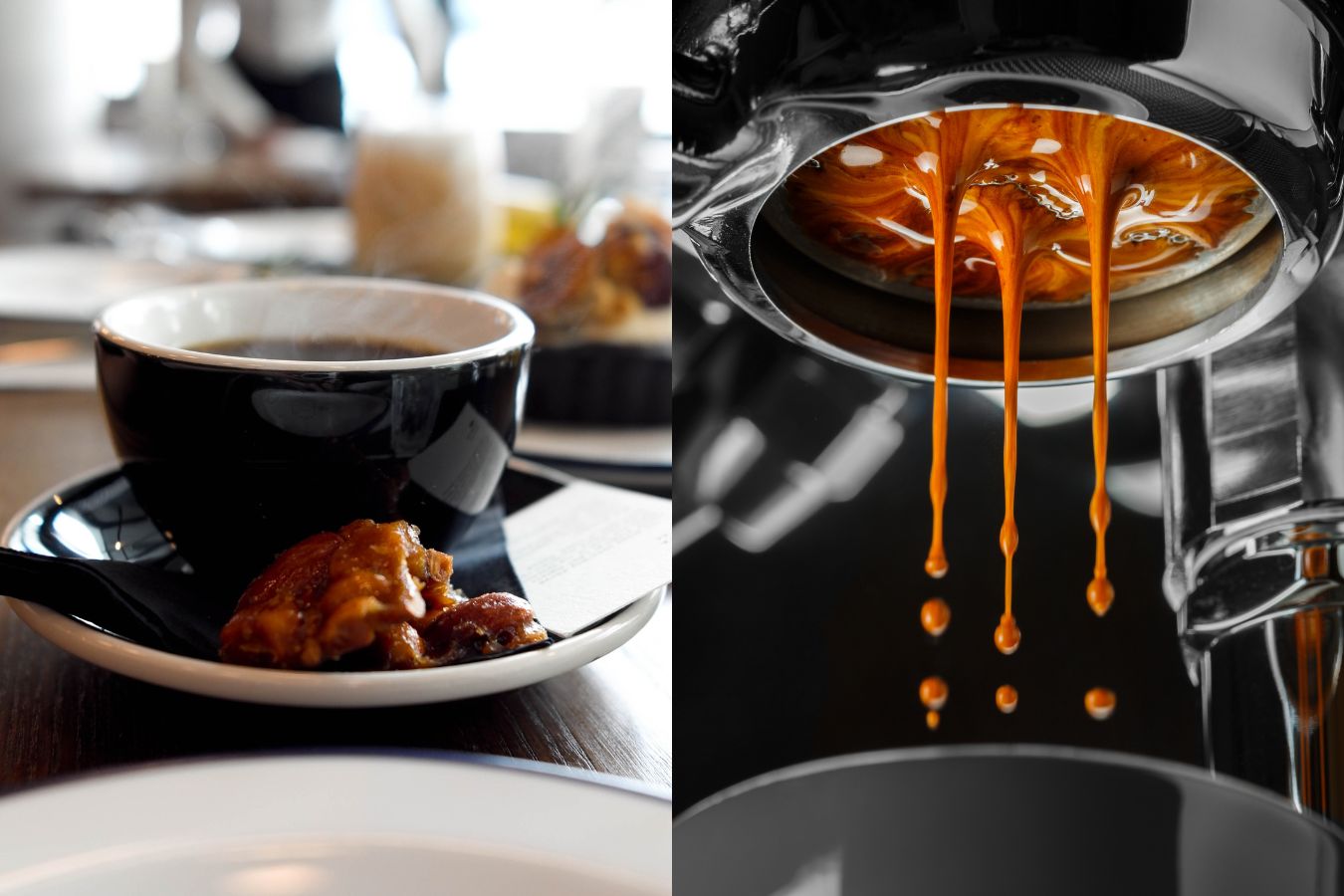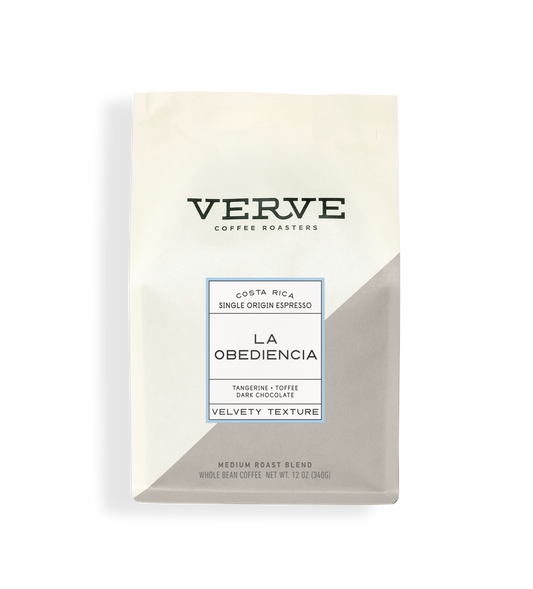Recognizing Coffee Beans: the Journey From Coffee to Blended Coffee Beans

The Origins of Coffee: A Global Viewpoint
While you could consider coffee as a contemporary staple, its origins map back centuries, intertwining with cultures around the world. The tale starts in Ethiopia, where tale claims a goat herder called Kaldi discovered the invigorating results of coffee beans after discovering his goats frolicking energetically after consuming them. This triggered passion, resulting in coffee's infect Arab investors who cherished the made beverage. By the 15th century, it got to Persia, Egypt, and Turkey, where coffee shops became social centers for discussion and culture.
As trade paths expanded, coffee made its method to Europe in the 17th century, promptly gaining popularity. Each culture included its unique twist to coffee preparation, enriching its background.
Growing and Harvesting of Coffee Beans
As coffee's trip progressed, the emphasis shifted to the growing and harvesting of particular bean ranges, especially those made use of for espresso. You'll discover that coffee beans often come from Arabica or Robusta plants, each offering distinctive flavors. The optimal expanding conditions include high altitudes and rich, well-drained dirt, which boost the beans' high quality.
During the harvest, selecting approaches vary. In some regions, employees hand-pick ripe cherries, guaranteeing only the finest fruit goes to handling. In various other locations, mechanical harvesters are utilized, particularly on larger farms. Timing is crucial; you wish to harvest when the cherries get to peak ripeness for optimum taste.
When collected, the beans are prepared for handling, which is important in determining their final preference. Recognizing the growing and gathering procedures offers you insight right into what enters into your favorite coffee, enriching your gratitude for each and every cup.
Processing Methods: From Cherry to Bean
Since you've discovered collecting coffee beans, let's check out exactly how those cherries transform into the coffee beans you enjoy. You'll see how various harvesting techniques impact flavor, followed by the crucial actions of fermentation and drying out. Finally, we'll break down the milling and grading process that establishes your coffee's quality.
Gathering Strategies Described
When it comes to coffee, understanding harvesting techniques is essential, because they directly influence the flavor and quality of the beans you take pleasure in. Selective selecting entails hand-picking just ripe cherries, guaranteeing you obtain the finest top quality beans. Ultimately, the choice of collecting technique can greatly influence your coffee experience, so it's worth recognizing exactly how those beans made it to your mug.
Fermentation and Drying
After gathering, the following actions in handling coffee beans play a substantial role in forming their taste. You'll find that fermentation is important, as it aids damage down the mucilage bordering the beans, enhancing their taste profile. Relying on the technique, this procedure can last from a few hours to a number of days, with varying outcomes based on temperature and humidity.
When fermentation is full, drying follows, which is equally crucial. You can pick from sun-drying or mechanical drying approaches. Sun-drying enables the beans to soak up tastes from the atmosphere, while mechanical drying guarantees constant dampness levels despite weather condition. Proper drying is important to avoid mold and mildew and preserve the beans' high quality, inevitably affecting your mug of coffee.
Milling and Grading Refine
As fermentation and drying out set the phase for flavor development, the milling and grading process assurances that just the best coffee beans make it to your mug. This phase involves eliminating the outer layers of the coffee cherry, including the parchment and husk. Top quality beans get a greater quality, resulting in a richer coffee experience.
Toasting Strategies: Opening Taste Potential
When you roast coffee beans, the method you select can dramatically affect the taste profile. Understanding the connection between time, temperature level, and roasting techniques is essential to exposing the potential of your brew. Allow's discover just how these components integrated to produce the ideal cup.
Roasting Methods Discussed
While you might assume that all coffee roasting techniques produce the very same outcomes, the truth is that each method discloses distinct taste possibilities in the beans. Drum roasting utilizes a rotating drum to uniformly distribute warmth, enhancing caramelization and creating a well balanced flavor. Air roasting, on the various other hand, flows warm air around the beans, promoting a lighter roast with noticable level of acidity.

Influence On Flavor Profile
Various roasting techniques not just affect the process however additionally greatly impact the taste account of the coffee beans. When you choose a light roast, you'll experience brilliant level of acidity and floral notes, showcasing the bean's beginning. On the other hand, a medium roast balances level of acidity with sweet taste, typically exposing chocolatey touches. Dark roasts, on the various other hand, bring out strong, great smoky tastes, occasionally concealing the bean's special characteristics. Each method exposes various oils and substances, causing a vast array of flavors. By try out different roasting designs, you can discover which profiles resonate with your palate. Comprehending these subtleties aids you appreciate the creativity behind your mug of coffee, boosting your total experience with every sip.
Time and Temperature Factors
To release the complete taste capacity of coffee beans, both time and temperature during the toasting procedure play considerable functions. When roasting, you'll locate that higher temperatures can rapidly develop tastes, yet if you hurry it, you may wind up with charred notes. Conversely, reduced temperature levels enable an extra steady flavor development, showcasing the beans' one-of-a-kind attributes.

Timing is equally as crucial; extending the roast also long can result in a loss of level of acidity and brightness, while also short a roast could leave the beans underdeveloped. Discovering that pleasant spot calls for practice and experimentation. By changing these factors, you can expose the abundant, complex tastes hidden within each bean, developing a truly impressive coffee experience.
The Art of Blending: Crafting Special Coffee Accounts

Beginning by selecting a base coffee that useful source offers a solid foundation. After that, pick complementary beans to improve specific taste notes. As an example, a bright Ethiopian bean can bring fruitiness, while a rich Brazilian coffee includes body. Experimentation is essential-- don't be terrified to readjust proportions till you locate your ideal profile.
As you mix, bear in mind that each mix narrates. You're not just making coffee; you're creating an experience. So, take your time, taste frequently, and take pleasure in the journey of finding your signature blend.
Developing Techniques: Exactly How Prep Work Influences Taste
Blending coffee opens up a domain of taste possibilities, yet exactly how you make that mix can Click Here considerably influence your final cup. Different brewing methods extract unique flavors and fragrances, so it's vital to pick wisely. A French press permits sediments and oils to remain, producing a rich, full-bodied experience. On the various other hand, a pour-over highlights the coffee's clearness and brightness, excellent for showcasing delicate notes.
Espresso, with its high stress, produces a concentrated shot that accentuates sweetness and crema. If you choose a lighter mixture, think about a cold brew approach; it generates a smooth, much less acidic taste.
Inevitably, testing is vital. Changing variables like water temperature level, grind size, and make time can change your coffee's account. So, welcome the art of developing to uncover the flavors hidden in your coffee blends. The right technique can raise your experience to new elevations.
The Future of Coffee: Sustainability and Technology
As the coffee market develops, sustainability and advancement are ending up being important for addressing environmental obstacles and meeting customer needs. You'll notice that more coffee business are taking on environmentally friendly methods, from sourcing beans morally to implementing sustainable farming methods. These changes not just aid the planet but likewise improve the high quality of the coffee you delight in.
You may see innovations like biodegradable packaging and water-saving brewing techniques that minimize waste. Advanced technology, such as blockchain, is also becoming popular, guaranteeing transparency in the supply chain, which enables you to trace your coffee back to its origins.
Furthermore, purchasing local communities and supporting farmers via reasonable profession campaigns cultivates an extra lasting coffee environment. As you drink your next cup, bear in mind that your choices can add to a brighter future for coffee. By going with lasting brand names, you're not just taking pleasure in a beverage; you're making a positive influence on the globe.
Often Asked Concerns
What Is the Difference Between Arabica and Robusta Beans?
Arabica beans are smoother, sweeter, and have a greater acidity, while robusta beans are stronger, extra bitter, and consist of even more caffeine. You'll notice these distinctions in flavor and scent when brewing your coffee.
Exactly How Does Altitude Affect Coffee Bean Flavor?
Elevation impacts coffee bean taste considerably. Greater elevations create beans with brighter acidity and facility flavors, while reduced altitudes often generate beans that are heavier and less nuanced. You'll see these differences in your mug!
What Are the Health Conveniences of Drinking Coffee?
Consuming alcohol coffee can increase your energy, boost mental emphasis, and even improve physical efficiency. It's rich in antioxidants, may decrease the danger of certain diseases, and can advertise a much healthier metabolic process when eaten in moderation.
Can Coffee Beans Be Reused for Developing?
Yes, you can reuse coffee beans for brewing, yet the taste may be weak. If you take pleasure in exploring, attempt recycling them in different means, like chilly mixtures or including to smoothie mixes for an extra kick.
How Should I Store Coffee Beans for Quality?
To maintain your coffee beans fresh, save them in an airtight Resources container in a trendy, dark place. Prevent exposing them to light, wetness, or warmth, as these variables can swiftly deteriorate their taste and aroma.
Comprehending Coffee Beans: the Journey From Espresso to Blended Coffee Beans.
Now that you have actually discovered regarding collecting coffee beans, allow's explore how those cherries transform into the coffee beans you enjoy.When you roast coffee beans, the method you choose can substantially influence the taste account - Single Origin Espresso.While you could assume that all coffee toasting approaches generate the same outcomes, the fact is that each strategy discloses one-of-a-kind taste possibilities in the beans.Various toasting approaches not just influence the process but also significantly influence the flavor profile of the coffee beans